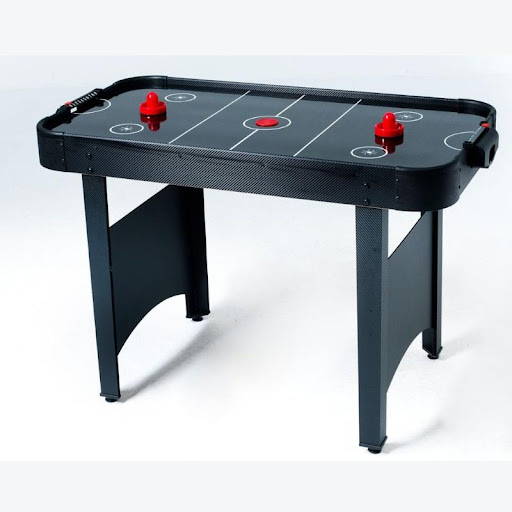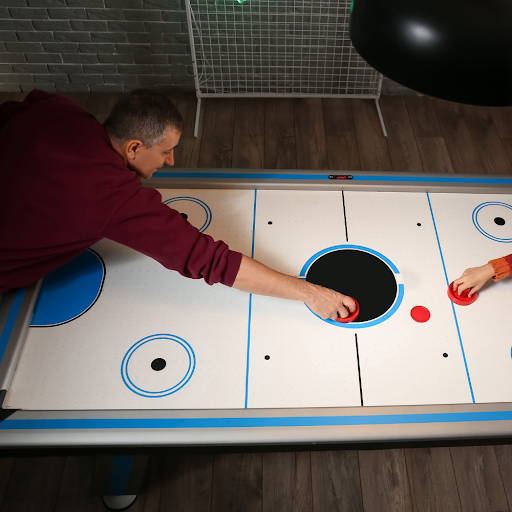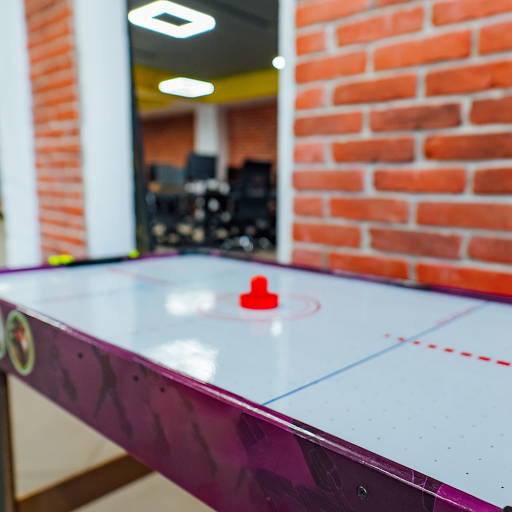How to Play Tabletop Air Hockey
Unleashing Your Inner Champion: A Comprehensive Guide to Tabletop Air Hockey
Air hockey is a game that has entertained millions worldwide, finding its place in arcades, bars, game rooms, and even homes. More recently, tabletop air hockey has gained popularity, shrinking the classic game to a more accessible and portable format. Here's an in-depth guide on how to play tabletop air hockey.
Understanding the Basics
Before getting into strategies and techniques, let's cover the basic rules and setup.
Setup: The game involves two players who face each other across a small, rectangular table. The table's surface is smooth to reduce friction and contains multiple tiny holes through which air is pushed, creating an air cushion for the puck to glide on. Each player has a mallet or paddle used to strike the puck.
Objective: The aim of the game is to score more points than your opponent by getting the puck into their goal. A match is typically played to seven points, but this can be adjusted based on personal preference.

Getting Started
Step 1: The Serve: The game begins with a serve. Players typically decide who serves first with a coin toss. The server must touch the puck to his or her side of the table before launching it into play.
Step 2: Playing the Game: After the serve, both players try to hit the puck into the opponent's goal while protecting their own goal. Players can only touch the puck with their mallet.
Step 3: Scoring: A point is scored when the puck enters and stays in the goal. After a goal is scored, the player who was scored against gets possession of the puck for the next serve.
Tips and Techniques
Now that we understand the basics, let's dive into some strategies and techniques that can help improve your game:
- Gripping the Mallet: Instead of placing your fingers around the knob on top of the mallet, place your fingers around the rim. This grip gives you better control, allowing for quicker responses and more powerful shots.
- Defense: Focus on good defensive play before trying to master scoring. Keep your mallet a bit forward from the goal. This will provide a larger reaction time to block incoming pucks. Remember not to leave your goal unprotected for long while attempting to score.
- Offense: There are various offensive techniques in air hockey, such as the straight shot, bank shot (bouncing off the sides), and the out-and-in shot (a deceptive manoeuvre involving hitting the puck towards the wall and quickly towards the goal when it bounces back). Practicing these shots can help add variety and unpredictability to your game.
- Use of Sides: The side rails of the air hockey table are a valuable tool. Good players will use them to make bank shots that are hard to defend against, or to manoeuvre the puck around their opponent.
- Body Position: Make sure you're standing in a comfortable position where you can easily move from one side of the goal to the other. Positioning your body slightly towards your dominant hand can give you better control.
Practice Makes Perfect
The best way to improve at tabletop air hockey is through regular practice. This allows you to get a feel for the puck's movement, perfect your grip, and master defensive and offensive techniques. You can practice alone by hitting the puck against the wall and blocking it, or better yet, find a friend and start a friendly competition.

Advanced Strategies and Techniques
Let's explore some advanced strategies and techniques that can take your tabletop air hockey game to the next level:
Advanced Defence Strategies:
- The Triangle Defence: This strategy involves moving the mallet in a triangular pattern in front of the goal. It allows you to cover more space and offers greater protection against diagonal or straight shots.
- Floating Defence: This defensive technique is designed to confuse and distract your opponent. Rather than keeping your mallet stationary, keep it moving in small, unpredictable patterns. The idea is to keep your opponent guessing and disrupt their aim.
Advanced Offensive Techniques:
- Delayed Offense: Instead of hitting the puck immediately when it comes into your zone, delay your shot. This can throw off your opponent's timing, making it harder for them to block your shot.
- Change-Up Shots: Vary the speed and strength of your shots to keep your opponent on their toes. Sometimes a slow, unexpected shot can be just as effective as a quick, powerful one.
Psychology of Play:
Understanding the psychological aspect of air hockey can give you an edge over your opponent. It’s not just about physical skills; mental tactics are crucial too.
- Maintaining Composure: Keep cool under pressure, especially when you're trailing. Players often make mistakes when they're anxious or trying too hard to catch up.
- Reading Your Opponent: Try to anticipate your opponent's moves by watching their patterns and tendencies. If you can predict their next shot, you'll have a better chance of blocking it or planning a counter-attack.

Importance of Maintenance:
Lastly, maintaining your equipment can also have an impact on your game.
- Clean the Surface: A clean table ensures that the puck glides smoothly. Use a soft cloth to clean the surface and holes, ensuring that there's no dust or debris.
- Mallet and Puck Check: Regularly inspect your mallet and puck for any damage. Any chips or cracks can affect your play.
Tabletop air hockey is not just a game of luck or chance. It's a game of skill, strategy, and at times, patience.
Tabletop air hockey is an engaging game that requires skill, strategy, and quick reflexes. By understanding the rules and employing the techniques discussed in this guide, you’re well on your way to becoming an unbeatable player. Remember, each player develops a unique style of playing. Experiment with different techniques and strategies to see what works best for you. Ultimately, the key to becoming a better player is practice, practice, and more practice.
Are you looking for an Air Hockey table? check out our Air Hockey Range





